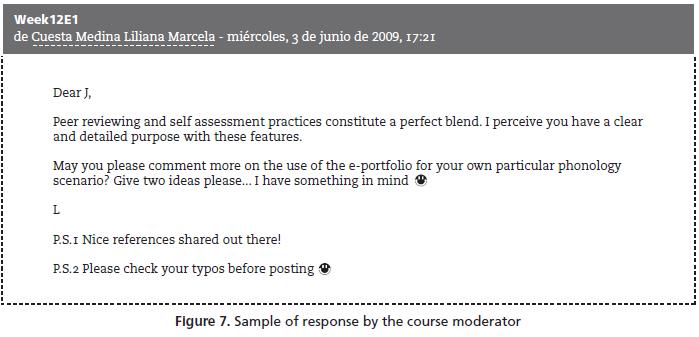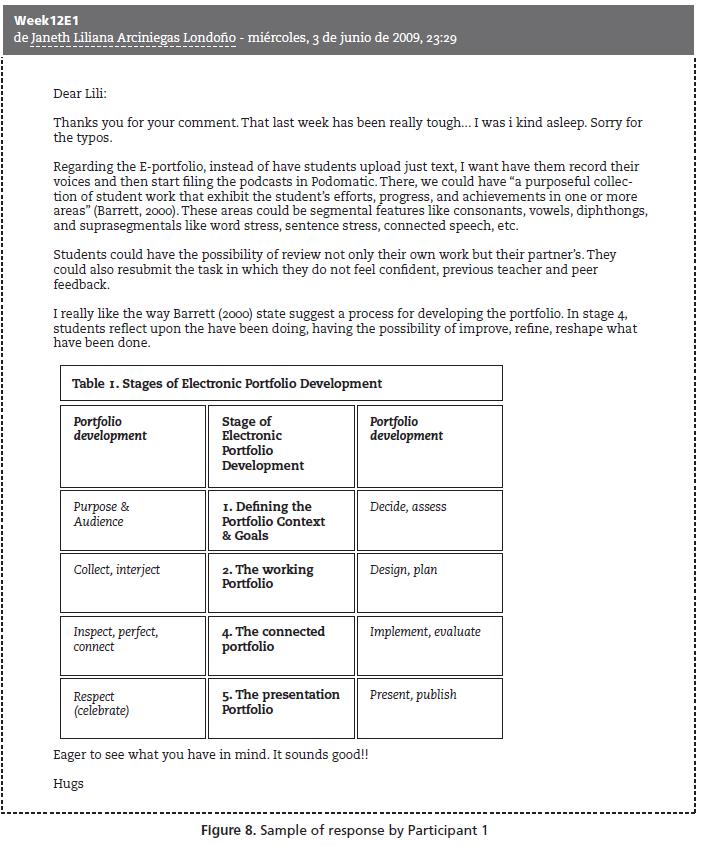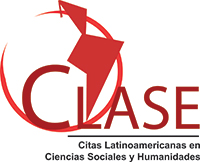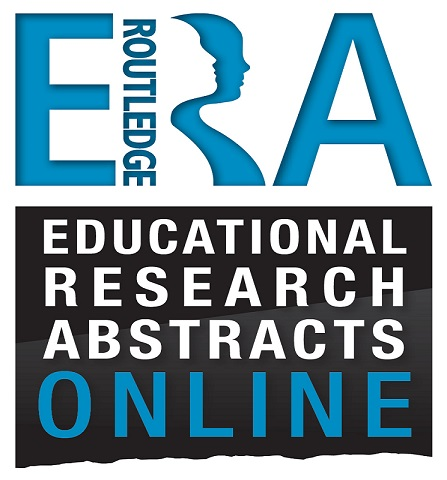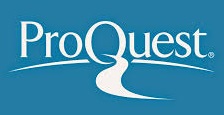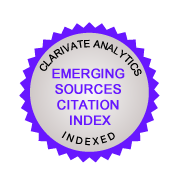The Design and Development of Online Course Materials: Some Features and Recommendations
The Design and Development of Online Course Materials:
Some Features and Recommendations
El diseño y desarrollo de materiales para cursos en línea:
algunos rasgos y recomendaciones
Liliana Cuesta
Universidad de La Sabana, Colombia
E-mail:
lilianamar@yahoo.com
This article was received on August 1, 2009 and accepted on January 20, 2010.
This article discusses various features in the design and implementation of online course materials. The author provides a critical review of some instructional design patterns and expands on the alignment among instruction, motivation and learners' performances as part of a curriculum design process. In this context, the author emphasizes the value of permanent analysis and assessment to support an efficient management of online environments in which knowledge construction and interaction find common ground on which to evolve. The author argues in favor of steady and competent efforts to implement varied educational strategies posed both for online instructors and learners. Practical recommendations are espoused for the designers of online courses.
Key words: Instructional design, online environments, ADDIE model, interaction
Este artículo discute distintos rasgos relacionados con el diseño y el uso de materiales en cursos virtuales. La autora ofrece una reseña crítica de algunos patrones del diseño instruccional y ahonda en la alineación existente entre instrucción, motivación y desempeño de los estudiantes como parte de un proceso de diseño curricular. En este contexto, la autora hace énfasis en el valor que tienen el análisis y la evaluación permanentes para apoyar el manejo eficiente de los ambientes virtuales en los que la construcción de conocimiento y la interacción encuentran un lugar común para su evolución. La autora defiende la idea de hacer esfuerzos constantes y competentes para usar distintas estrategias educativas, planteadas tanto para instructores virtuales como para sus estudiantes. Finalmente, se presentan recomendaciones practicas para los diseñadores de cursos virtuales.
Palabras clave: diseño instruccional, ambientes virtuales, modelo ADDIE, interacción
Introduction
There has been a significant increase in the proposals aimed at integrating information and communication technologies (ICT) in Colombian educational institutions in the last five years. However, there remains a need to align many of these attempts with one of the main goals projected in the Plan Sectorial de Educación 2006-2016: to guarantee people's access to ICT and generate opportunities for them to fully use and benefit from this.
According to Fullan (1997, p. 5), curricula that use online environments to draw on the capacity of ICT to transform society can provide a more qualified and accessible means of delivering education. Moreover, the implementation of such curricula offers opportunities to construct actively networked learning communities that grow consistently in response to the demands of a global need.
This article intends to provide readers with some considerations regarding the creation and implementation of online materials as part of a curriculum design process for virtual environments. In acknowledgment of this, and following an interdisciplinary perspective, some considerations will be outlined with respect to the creation and implementation of online materials for courses presented by means of virtual environment platforms. The author presents some views in the field of course design based on her experience as a course designer, moderator of virtual learning environments, and also as a head researcher in two studies which primarily sought to discover effective features and strategies to design and implement virtual courses for graduate students.
Rationale
Instructional design is a process that entails the creation or adaptation of instruction. Most research evidence concerning instructional theories relies on underpinning principles that address and respond to learning needs and goals. The basic aim is to identify conditions of instruction, which will optimize learning, retention and learning transfer (Gagne & Briggs, 1974).
Most models of instructional design require covering certain stages throughout their implementation. Those phases move from determining needs assessment to design, development and implementation of materials. This article focuses particularly on the latter stage and presents some features that could make the design process a dynamic and achievable target. For the author, the design process is seen as a continuum that has the following characteristics:
- Is based on determining a target audience that benefits from instruction.
- Determines objectives and needs assessment according to the audiences' needs and styles.
- Selects, designs and sequences content and learning activities based on these foregoing features.
- Evaluates and implements changes dynamically.
The field of instructional design (ID) has emerged from a combination of varied academic disciplines such as psychology, system theory, computer technology and communication (Yukavetsky, 2003). ID has also shifted from behaviorist to cognitive-constructivist1 conceptions (Sarmiento, 2007; Schuman, 1996) in the sense that increasing emphasis has been placed on discovering how successful learning can be devised by analyzing why learners behave differently, how learners construct meaning from individual experiences, and how they are able to sort situations out, rather than being able to execute automated practices without understanding how these are carried out. Needless to say, when designing materials, the decisions about whether to create learning materials using a behaviorist, a cognitive or constructivist approach are in the hands of the designer, keeping in mind that the major point of departure for building the project outline is a conscientious analysis of what the learner may need, pursue and enhance.
When we think of instructional design, we typically think of the term "models" which, as defined by Ryder (2008, p. 1), "give structure and meaning to an ID problem, enabling the would-be designer to negotiate their design task with a semblance of conscious understanding". Working from Ryder's definition, this article seeks to identify a blend of components that leads to a purposeful and practical design process.
The initial point of departure is a consideration of an already useful approach to course design: the Analysis, Design, Development, Implementation, and Evaluation (ADDIE) model (Figure 1). This generic model2 facilitates universal ID guidelines that are structured in five stages: Analysis, design, development, implementation and evaluation. The stages of the addie model are explained as follows:
Analysis
As in any project, this is a crucial planning stage. Its main purpose is to identify the target audience and its characteristics. Apart from planning the timeline for the project, designers can use this stage to formulate needs and tasks analysis instruments that allow close examination of decisive criteria beforehand. These may include instructional objectives, types of learners (i.e. in terms of their learning styles and intelligences), delivery options, instructional content, material usability and accessibility.
In this stage, designers need to bear in mind that the design of materials should target meeting the institutional needs (including both program and course) and requirements. Some data collection instruments -such as oral interviews, questionnaires or surveys used with faculty and staff- can help designers build and strengthen the rationale behind the material design process. A systematic data collection stage prior to the design phase also assists designers to establish the infrastructure needed to carry out the project and, therefore, depict the procedures to be implemented in subsequent phases.
Design
This stage calls for aligning what was encountered in the needs analysis stage with the actual structure of the instructional content. The design stage has two major characteristics: being systematic and being specific. It is systematic because it needs to establish a logical method to identify, develop and evaluate strategies to achieve an instructional objective and, it is specific because each constituent of the general plan must be carefully set up in this stage, attending to specific details.
Design also implies defining solutions in terms of arrangement of resources, strategies and assessment procedures that will best suit instruction. Prestera (n.d.) establishes that the assessment items are derived from the criteria (learning objectives) written in the analysis stage. He suggests that designers work with a design strategy document containing discoveries from the analysis stage and, in any case, a set of scripts/ storyboards that could apply.
Creating a design strategy document is not a difficult task but it is one of the central parts of the design. It will indicate the team members participating in the materials design project, the navigation route to follow, and inform of the distinctive features the materials will have. It will also help to develop the strategic planning in order to meet the objectives traced. The following are some core items to include in a design strategy document:
- What type of learning materials are we creating?
- What sections will our materials contain?
- What is the intended audience to use the materials? Who will benefit from them?
- What resources are available for us to design materials?
- Who will comprise our pilot group?
- How will we assess students while/ after they use the learning materials?
- How will we evaluate the effectiveness of the materials we designed?
Development
The development phase deals with the creation of authoring tools and products3 required to meet the instructional objectives planned in the earlier stages of the model. In this stage, designers elaborate an action plan composed of specific procedures, participant / responsible agents as well as timelines to get the plan done. Figure 2 includes a sample of an action plan of a course design and research project developed by the author of this article during 2008 and 2009 in the Department of Foreign Languages and Cultures, Universidad de la Sabana, Colombia. Note that varied agents are involved, as well as corresponding tasks for every stage of the project.
It should be noted that the team developing the course design project needs to agree on the procedures to monitor a smooth development of the project. Likewise, roles, functions and times need to be agreed upon and met.
Implementation
Once the development phase is complete, the next stage of implementation puts the planning into operation. There are three necessary circumstances to make this stage efficient: a) determining a previous training procedure for preparing both teachers and learners, b) promptly assessing learners and c) setting up all the necessary conditions (tools, spaces, personnel). The implementation stage calls for a high degree of involvement by the participants (facilitators) who lead this stage of the project.
Evaluation
Evaluation in ADDIE model is formative and summative. It is seen as a wide-ranging process that becomes consistently wider all through each one of the stages. The evaluation determines if there was success in planning/using the products created and/or if further improvements may be needed. Formative evaluation takes place in the early stages in order to identify product weak points, evaluate them and decide on working out a mid-project plan that can surpass any obstacles encountered in these stages. According to Strickland (undated), there are six stages of formative evaluation. These are: evaluation goal specification, preparation, data collection, data analysis, revision and recycling.
Summative evaluation is done once development and implementation phases are completed. This type of evaluation seeks to collect and analyze data4 to determine whether end-users found the implementation stage efficient and if it was wellaligned with the instructional aims.
I personally recommend visualizing ADDIE stages cyclically, considering that the progression of each phase will determine the emergence of interventions that the material designers will undertake as the course materials are created. ADDIE model serves as a practical guide for a materials design process, which when followed sequentially can assist designers in implementing actions leading to improvements throughout the project. It is recommended to devise a project timeline aligned with the various stages of the ADDIE model, constantly revising and adjusting it based on emergent needs and developments in the process itself.
Agents involved...
Once such a timeline is traced, course designers need to devise the agents that will put ideas into action. Any successful planning stage involves the participation of a dynamic team that actively works on the project. Some case studies developed by Honey & Macmillan (1996) demonstrate that high levels of productivity can be achieved if the participants in virtual projects uphold committed working relationships with their peers. The authors address the importance of maintaining interdisciplinary work and shared planning time in order to achieve the expected results. They also stress the value of comprehensive training from experts and steady support from coworkers. Cradler & Cradler (1995) also determine that a crucial aspect attending the process and ensuring its goals is followup assistance from both the educational team and the technical support team working on the project. Once the agents have been identified and the team is in place, there are four basic conditions for effective integration of technology into materials design:
- Technical assistance: This involves the availability and expertise of technicians who will help as situations arise.
- Planning time: There have to be mechanisms to ensure teachers will have sufficient planning time scheduled to develop the project endeavors, to be documented on subject matters regarding the targets of the project, and, of course, to be ready to implement technology applications during the mission.
- Staff development: The possibility of having different kinds of training (short term, long term) helps to integrate technology and instruction and enriches the professional development of every team member.
- Technology access: There has to be a prompt access to technology while all the stages are being completed and the corresponding deadlines are being met. This adherence would guarantee that project tasks are not limited by the scarcity or malfunction of technological resources.
When planning materials for online courses, designers need to think strategically and flexibly about technology and education. Technology should be the means by which educational processes are enhanced. Every agent and device used in the design, development and implementation of materials need to facilitate the retrieval and processing of information by the end-users. An online environment should establish the learning space that allows students, assisted by tutors and technicians, to find a self-controlled scenario. Moreover, the administration of the institution where the project is taking place should provide the design team with the necessary tools and should also contribute actively to minimize any difficulties that might be encountered throughout the development of the project.
Clearly, participants in an e-learning project need to have certain ICT competencies, which can be defined as "knowledge and skills that the workers need to be able to perform tasks related to the information society" (Hernández, 2005). Hernández (2005) states that "every project participant must have a minimum of competencies in order to be familiarized with online environments, and also maintain a positive and active attitude to manage the systems and services used" (p. 34).
There is indeed a big challenge in terms of preparation, which in Olcott's (2006) words is seen as a primary commitment to comply with the faculty's expectations. Faculty members are the principal agents who will deal with the transition from traditional classroom practices to those required by online environments. They need assistance in acquiring ICT skills and know-how in order to pursue the objectives and schemes that need to be accurately incorporated into their teaching and learning practices. Dillon & Walsh (1992) assert that placing sufficient importance on faculty assistance, training and support helps ensure future success when creating and teaching online courses, thus building up a new trend in pedagogy to view these as risk-taking but enriching experiences.
There are different roles that can be assumed by the participants in any e-learning project. Hernández (2005) comments that some of the roles can sometimes be performed by the same "agent", depending on each institution's policies, the availability of both resources and staff members. Fernández & Montes de Oca (2003) agree that any e-learning project should create a multidisciplinary team in which content specialists, technicians, designers, and others can integrate their expertise in a timely and constructive manner.
The following list of roles is based on Hernández' reflections (2005), as well as on the perspectives I want to highlight in this paper:
- Director: Guides the team members to fully achieve the goals established. Designs an action plan to be accomplished according to the institutional needs.
- An academic team: Creates and adapts course contents. Composed of the following:
- An e-learning specialist: Is committed to the methodological design and plans training activities oriented to the usability of services and tools.
- A pedagogic coordinator: Plans, selects and revises content created by the academic team; leads activities within the academic team.
- Tutors: They move from a role as "knowledge providers" to one of "knowledge facilitators". They are dynamic agents who enhance the autonomous learning that students develop. Figure 3 below shows the roles Hernández (2005) depicts for an online tutor.
- A technical team: In charge of all the technical components in the project. Composed of the following:
- A technical coordinator: Supervises the technical team; assesses the academic team and the e-learning specialists in the design of the course and of the virtual learning objects5.
- Platform Administrator: Responsible for the optimal functioning and maintenance of the platform.
- Campus administrator: Responsible for the campus management. Gives account of access permission and policies.
- Graphic designer: Expert in multimedia; competent person in the management of tools used in the materials design process (e.g. animations, photography, etc.).
The end-users...
In order to align a refined instructional design proposal with the creation of online materials, teachers who become designers6 need to be aware of the shift that the 21st century knowledge society faces, where one of the major dilemmas is to envision how the conception of learning and instruction advances from a teacher-centered to a learner-centered instruction standpoint. Sandholtz, Ringstaff, & Dwyer (1997) consider that a crucial element in the successful use of technology relates to the following challenge: teachers need to change the beliefs about teaching and learning. They need to acquire certain skills or comply with certain conditions to ensure that their students are engaged in their learning and work efficiently by taking on more autonomous and active positions.
According to Castrillo, García & Ruiperez (2005), in online environments, a "tutor" is an academic professional who guides the students' learning process by fostering autonomy and stimulating their constructive and analytical attitude towards the processes that are oriented. However, there has been another broader sense of the term "tutor" as noted by Cornelius & Higgison (2000), who strongly believe that an online tutor could include, amongst others, academics, faculty, instructors, corporate trainers, facilitators, moderators, subject specialists and learning support staff. It is believed that anyone who is able to assume a role to support and facilitate students' effective online learning could be denoted as a tutor.
Some of the key skills that an online instructor/ tutor needs are the following:
- Clear and steady communication:
- By offering different communication channels, both synchronous and asynchronous. (E-mail, Forum, Chat, Skype, etc.)
- By providing students with clear instructions.
- By determining the most appropriate moments to intervene in discussions and to continuously have and promote interaction with groups/individuals.
- Information Technology (IT) and content area competence:
- By being able to mentor learners and troubleshoot others when difficulties arise.
- By keeping in mind that an online tutor needs three things to succeed and reach greater levels of expertise: preparation, discipline and procedural coherence.
- Management:
- By setting up a personal planning schema that will allow the e-tutor and e-learners to deal with expected performances (in terms of time and production).
- By being able to make sound decisions that benefit all the agents involved in the course.
- Vision:
- By having the ability to look for resources and methodologies that will ensure the quality of the course.
- By critically analyzing strengths and weaknesses encountered during the course, whether over a short- or long-term period.
- Open-minded attitude:
- By working cooperatively with the elearning group.
- By being capable of accepting suggestions, providing solutions, and attending to learners' requests.
- Leadership:
- By understanding that innovation and the willingness to implement strategies constitute the motor that facilitates processes within the virtual educational community that the e-tutor leads.
- By being a coach, a learning navigator and co-learner (United Nations Educational, Scientific and Cultural Organization (Unesco), 2002. See Table 1), the tutor can promote the institution of knowledge societies7, where knowledge is dynamically viewed and highly structured.
With these criteria in mind, it should likewise be recalled that learners also play a determining role in the change of mentality required to meet new educational challenges in non-traditional learning environments. Stokes (2000), Dede (2000) and Ernest (2003) establish that a coherent preparation for online learners must be devoted not only to training in IT skills but also to the application of strategies that will enhance learners' self-motivation, self-discipline, independence, and willingness to learn from errors. Learners are seen as risk-takers and constructive members in a learning community.
Accordingly, if learners are given the tools to analyze and understand the principles that underlie the construction of learning that occurs in online environments (but that is of course not limited to online settings), they will know how to organize a set of strategies and/or procedures to build on success based on target goals and competences. Such significant changes concerning their roles as active learners should help them achieve increased expertise in lifelong learning.
Particularly, I suggest intertwining five major online action categories8 that provide learners with the appropriate foundation to facilitate their performance in an online setting. These categories could also assist teachers in devising fundamental guidelines throughout the analysis, design, development, implementation and evaluation stages of designing online course materials. The categories are the following:
- Organizational: This basically refers to the way in which e-learners develop a plan that permits them to organize their time and manage it in order to comply with the demands9 of the course.
- Technical: It is projected that e-learners understand the purpose and function of different information and technology systems and their corresponding applications in order to eventually troubleshoot and solve any technical difficulties that may arise. If the learners understand how systems operate, apart from getting the know-how to sort situations out, they will be more than likely able to implement emergent technologies that can harmonize with or improve their performance.
- Procedural: Once learners are familiar with the technical implications of the LMS10 they will use in the course, it is vital that they follow the instructions imparted by the tutor and/or the system to assure that they carry out the specific tasks and routines planned. Therefore, it is important that they have the opportunity to explore the system, try out its tools, familiarize themselves with the procedures and types of interactions involved, reflect upon their performance, and make any necessary adjustments.
- Interactional: Taking into consideration the two different types of interaction referred to previously—person-to-person and personto- group—it is argued that e-learners, as the major participants in the learning experience, be advised to create and maintain an enjoyable and collaborative class atmosphere based on common core principles such as mutual respect, good attitude, clear communication, and appropriate rapport with peers and tutors11. Indeed, it is also suggested that tutors have a substantial role to play in modeling and guiding learners towards the acquisition and development of this philosophy. Such interaction, mediated by language in online environments, implies that individuals use asynchronous and/or synchronous means by which individuals communicate online, and tutors should evaluate the relative effectiveness of these different means as learners use them to interact in a social and academic learning community.
- Transactional: According to Brown & Yule (1983), when individuals communicate, they do so for two main purposes: either to exchange information (transactional) or to establish and uphold social relations (interactional). The transactional function13 refers to the transfer of information and focuses on the message rather than on the individual (as could be in the case of the interactional function of language). They argue that while interactional language is "listener-oriented", transactional language is "message-oriented". Bearing this in mind, and transferring this idea to the art of communicating and exchanging knowledge in online environments as proposed by Harris (2008), a substantial element in the accurate and meaningful transfer of information is conciseness and clarity in the expression of ideas. E-learners may comprehend that their e-readers first need to get the general gist of their discourse in order to reach a clear understanding of the main message and to create further negotiation of meaning. Accordingly, it is recommended that, apart from building understandable texts, learners make use of text formatting tools such as bullets and charts to exemplify ideas and that they use different fonts or bold/italic formatting to emphasize main points. Such techniques help make the flow of ideas respond to what the text of the message communicates.
Nevertheless, regardless of the means by which messages12 are conveyed, in order to avoid misunderstandings, the community of participants (including tutors and learners) must nurture agreed interactional channels. These channels should respond to ongoing needs analysis and a framework of continuing evaluation throughout the different phases of the course and should contribute to building social relations that work in partnership with life-skills practices.
Interaction in online learning environments
The need to develop and empower learning abilities and the continuous intervention and assessment of the tutor will be two essential constituents that contribute to the learners´ success in the course and their satisfaction in the newly adopted learning mode. Tutors need to employ practices that focus on fulfilling their learner's needs, ensuring their engagement, motivation and positive response. Success in this depends on the presence and effective use of interactional patterns and practices generated in the learning environment in which technology acts as a mediating agent.
Wagner (1994) and Gilbert & Moore (1998) describe interaction as "an exchange in which individuals and groups influence each other occurring when there are reciprocal events requiring two objects and two actions" (p. 20). In a comparable view, accepted by Roblyer (2000), the assertion that "technologies that allow high interactivity seem necessary to allow high person-to-person, personto- group, and person-to-system interaction" (p. 2) matches with Ur's concept of interaction (1990) to the extent that the teacher is not considered the only one who takes the initiative to build interaction in a class, since this could take place amongst students –or even between the student and the material.
Note that the former authors are mainly referring to online interaction while the latter refers to interaction that takes place in face-to-face environments. This reaffirms another general premise in the field of e-learning developed from the current study: students can be given the possibility to adapt or adopt learning skills acquired and/or developed in face-to-face contexts to circumstances that allow them to be active participants, competent users and motivated learners in virtual learning environments. With respect to this, it seems likely that a major role for teachers (both viewed as course designers and tutors) involves smoothing the progress of learners through the incorporation of highly interactive practices that transfer well from synchronous to asynchronous learning scenarios.
In fact, the emergence of interaction in the three cited levels (person-to-person, person-togroup, and person-to-system) implies that learners must make a profound commitment in their plans to accomplish learning in a non-traditional but cooperative manner.
Designing materials
When principles, plans, agents and resources have been set up, designers move to determine how the course materials' underpinning features are connected in order to develop the project. Important decisions about material and strategy selection need to be made. The following are recommended areas of consideration at this stage:
Content
The first area of concern for material designers deals with finding a framework that aids the procedures to tailor the material in such a way it responds to the learning objectives, to the cognitive processes to be developed and to the topics and subtopics the material will, per se, cover. Furthermore, material designers need to regard it as imperative that the following will take place:
- The expected products are defined in accordance with the curriculum of the institution in which they will be used.
- The expected products are subject to a continuous evaluation stage14, which could possibly result in further modifications in order to ensure an offering of high quality, resourceful, up-to-date and pedagogically-based material for the educational community.
Structure
The structure of the material will be determined based on its organization and its interactivity, since both components allow the users to have not only accessible routes to utilize the materials but also to find appealing and practical modes for presenting content. The organization of the material must take the following into account:
- Information: Defining sections and activities contained in the material.
- Classification of the material: Ordering metadata to help learners find the material they need, when they need it. Day (2005) observes that metadata are used to help support a vast range of operations: resource description and discovery, the management of information resources (including rights management) and their long-term preservation.
- Navigation: Plotting how content moves from one point to another in the course material to ensure that the content is accessible to learners in a wide array of forms. UKOLN project participants (2005) argue that the access to the material should be via buttons (e.g. previous, next, home/menu). They advise the following:
- That buttons should be located in the same position on all screens for ease of navigation.
- That content units should be presented in small elements. The pages (visualized on the screen) need to be organized into "meaningful, self-contained chunks" that do not spread out onto the next page. In this way, learners are provided with a concise flow of information that enables them to understand the content presented on a screen before progressing to the next one.
- That a bookmarking facility or system of menus should exist that permits learners to control the progress of the material (stopping, restarting, pausing, rewinding material, etc.) and also to move within the menus and exit the current section in which they are working as needed.
- That help and hint buttons exist that help learners resolve doubts regarding material content and technical issues.
- Material Design: Clarity, aesthetics and neatness are three features that help the material be appealing to the eye, legible and understandable. Designers can achieve these by observing the following:
- Combining images and text, but avoiding excessive use of texts and images onscreen.
- Presenting the information in a clear, standard and labeled way (by using bullet lists, charts, different fonts, etc.).
- Using clear and succinct language in the texts.15
- Using appropriate colors16 to help learners identify main ideas and to discriminate different kinds of information.
- Having icons that help learners to visualize and recall recurrent information.
- Choosing clear images/graphics, multimedia for specific and well-defined purposes.17
The interactivity18 of the material will, in turn, promote responses by users, allow them to work with multiple resources presented in different formats (for example, image/text combinations, drag and drop options, or scrolling text19) and let them customize the mode in which the material is presented.
Management and support
Apart from carefully selecting and structuring how materials will be sequenced, it is recommended that designers deliberate on how to help learners successfully access information sources that facilitate their learning. This kind
of management and support can be aided by including the following elements:
- A tutorial that guides the students in handling the online course.
- A section containing the core documents of the course: syllabus, schedules, etc.
- A list of bibliographic sources/links that complements the course content.
- A glossary of relevant terms used in the course.
- A Frequently Asked Question (FAQ) section that serves as a reference to learners about both content and technical troubleshooting situations in the course.
- A contact list that provides learners with information for their tutors, their peers, and for the IT specialists and course administrators who can help them in case they need support (with CMC tools such as e-mail, chat, forums, etc.)
- A copyright compliance notice that guides the learners in the appropriate use, treatment and distribution of course materials.
In addition to these components, it is recommended that each set of course materials include the following subsections:
Title of the lesson: This should be motivating, as well as appealing to eye and ear.
Presentation of the objectives and instructions: These have to be clear, brief and specific for the students. Learners need to know about the lesson requirements and expected performances and products. Instructions must be devised in such a way that there is no room for ambiguities or misunderstandings.
The sample in Figure 4 shows the model layout followed in a virtual course. The introductory section materials of the lesson provide participants with information related to the topic and objectives of the lesson, the expected time learners will spend on the activity/ies, the amount of posts (responses) required in the activity and the deadline for its completion.
Warm-up activity: This engages students' attention and allows them to recall prior knowledge; it encourages them to learn and study the new topic by stimulating their minds. With the advent of new authoring tools, designers can easily create interactive activities in varied formats, including word games, picture games, fill-in the blank tasks, multiple choice items, puzzles, mazes, mind maps, videos, and audio files. Depending on the nature of the course, designers can also create selfassessment activities that serve as lesson activators. The inclusion of selected reading extracts can also help engage learners in the lesson.
Central activities: These are activities in which the core lesson material is presented to the students. Concepts and definitions are introduced and accompanied by different sets of exercises that expand students' knowledge of the subject matter. This material needs to be sequentially organized according to the complexity of its features. It is expected that the students understand and handle the basics before moving to more complex issues. Designers should vary the ways in which materials are presented. For example, they could observe the following:
- Start a lesson with a short text that outlines the central points of the topic at hand, keeping in mind the material design criteria outlined above.
- Promote the use of hypermedia sources such as video clips, podcasts, and PowerPoint presentations. These can help students pursue the objectives of the lesson and can also form part of an effective approach to an audience of mixed-ability learners.
The sample presented in Figure 5 is part of Lesson 12 in the formerly mentioned course.
Participants (graduate students) had to think of an imaginary blended learning population and plan an effective assessment activity they would use, being assisted by technology. Learners were encouraged to search for academically reliable web sites to enhance the lesson they had in mind. The excerpt below shows the rationale of the source a student chose. The subsequent messages correspond to a Course Forum thread moderated by the course instructor. A comment by one of her peers and her teacher are also shown.
Assessment and wrap-up activities: Every lesson should conclude with activities that wrap up the issues covered in the introductory and central sections. These wrap-up activities can include reflections or extra practice assignments such as project work, literature reviews, surveys, interviews, portfolios, and presentations that lead students to work autonomously and that contribute to their developmental practices. Note that these activities are also assigned as either collective or individual work but that all activities must be designed to include corresponding feedback. Designers and course instructors need to agree on types of assessment and interaction to be implemented throughout the process.
The student in the thread shown in Figures 6, 7 and 8 used the comments made by her peer and teacher to reflect upon and also find more support for the arguments previously developed. The excerpt shown in Figure 8 shows the expansion of her thoughts in her response to her tutor.
In an online discussion, tutors should attempt to foster the development of elaborate arguments and critical responses that generate discussion and real interest to all participants. Learners should be shown how to develop these competences gradually. It should be noted that later on this student used the cited resource to create learning materials (podcasts), which she used to complement her classes, for her students.
Conclusion
In the modern learning environment, course designers are continuously exposed to an ever-widening range of pedagogical implications, models and strategies. However, if tactically put together, the right combination of elements and emphasis in the design can provide the means to implement course materials that respond to the necessities and performance goals of the specific target audience. It is essential that, regardless of the model chosen, designers plan for and meet the instructional objectives necessary for an effective course process, developed through a gradual but steady instructive mode. Every participant in the process needs to acknowledge the value of continuous analysis and assessment that determine whether the technical and educational features of the material are aligned with the course, with the material objectives, and with the learners' expected outcomes.
The different strategies examined and the recommendations proposed in this study offer designers a holistic approach to the development and support of online learning and instruction. Further research is currently in progress to further examine how the selection of particular instructional components, strategies and models can be applied to enhance the ways in which learners and instructors access knowledge in online environments.
1 Sarmiento makes reference to the works developed by Gagne, R., Skinner, B. under the behaviorist trend and to Bruner & Ausubel, under the cognitive-constructivist trend.
2 According to Molenda, M. (2003, p. 1) the acronym ADDIE does not have a single author. It is an umbrella term that appears to "have evolved informally through oral tradition".
3 Among the products that can be created we find storyboards, graphic user interface, multimedia elements, coding, etc.
4 Summative evaluation validity can be measured with the use of criterion-related instruments selected by the project participants
5 A virtual learning object is considered as an alternative to content production for e-learning (Chiappe, 2007).
6 Levy & Stockwell (2006) establish that foreign language teachers could be also considered as designers.
7 Abdul Waheed Khan, former Unesco general sub-director defined knowledge society as "a concept linked to the idea of 'technological innovation', and includes a dimension of social, cultural, economical, political and institutional transformation, and a more pluralistic and developmental perspective 'knowledge societies' is preferable to that of the 'information society' because it better captures the complexity and dynamism of the changes taking place" (2003, para. 1).
8 Harris, S. (2008) established the names of the five categories with the purpose of addressing some guidelines that could fulfil the main needs and constitute, to some extent, the main skills that an online learner needs to develop. In this document, I expand on the definitions and purposes of these sortings.
9 The different requirements in an online learning course include a wide array of activities such as participating in forums, communicating with peers and tutors, building up documents or creating and interacting with any virtual learning object(s), etc.
10 LMS stands for Learning Management System. Some examples of LMS are Moodle™, Blackboard ™ and WebCT ™.
11 We can consider Brown & Yule (1983) reference to this category in their discourse analysis and sociolinguistics literature production, where they primarily state that interactional uses of conversation focus on the social needs of the participants.
12 The existing gap between verbal and non verbal interaction online could be bridged with the use of emoticons, color coded fonts and visual aids (pictures, animations and/or cartoons).
13 The same distinction has also been pointed out by McCarthy (1991), who states that "Transactional talk is for getting business done in the world, i.e. in order to produce some change in the situation that pertains. It could be to tell somebody something they need to know, to effectuate the purchase of something, to get someone to do something, or many other world-changing things" (p. 1).14 This evaluation needs to be conceived to be done by all parties involved: students (end-users), teachers and/or designers. There may be cases in which there are also peer reviewers of the material who belong to different educational institutions and who can contribute to the evaluation process.
15 It also includes: 1. Published material needs to be errorfree. It needs to comply with punctuation and academic style patterns. 2. Excessive use of abbreviations and acronyms and capitalization should be avoided.
16 The UKOLN Technical Advisory site suggests to take into account color blindness, the use of high contrast colors such as white on a black background and not to use more than 5 colors since it could be confusing.
17 If the graphic/video is not created by the designers, they need to acknowledge its source. This is done in order to be in compliance with established institutional /individual copyright policies.
18 There are many authoring tools that have been created in the past 20 years which provide different interaction models. These could be classified under varied categories i.e. games, puzzles, simulation tools (i.e. Adobe Flash Player), presentation and organization tools (i.e. PowerPoint, Cmap tools, Mind manager), etc.
19 The author of this article suggests avoiding the unnecessary use of scrolling. In case this is needed, she recommends opening a new window to present the material.
References
Brown, G., & Yule, G. (1983). Teaching the spoken language. Cambridge: Cambridge University Press.
Castrillo, M., García, J., & Ruipérez, G. (2005). Glosario sobre E-learning. La Formación sin distancia. Madrid: TT Net España. Servicio Público de Empleo Estatal. Fondo Social Europeo.
Cradler, J., & Cradler, R. (1995). Prior studies for technology insertion. San Francisco, CA: Far West Laboratory.
Colombia. Ministerio de Educación Nacional [MEN]. (2008). Revolución Educativa: Plan Sectorial de Educación 2006-2010. Documento No. 8. Colombia.
Cornelius, S., & Higgison, C. (2000). The Tutor's role. Heriot-Watt University and Robert Gordon University. Retrieved March 20, 2008 from http://otis.scotcit.ac.uk/onlinebook/otist206.htm
Chiappe, A. (2007). Learning objects [Web log post]. Retrieved March 1, 2008, from http://andreschiappe.blogspot.com/2007/10/qu-es-educacin-virtual-y-que-tiene-que.html
Day, M. (2005). Digital Curation Manual. Installment on "Metadata". Retrieved February 7, 2008 from http://www.dcc.ac.uk/resource/curation-manual/chapters/metadata/
Dede, C. (comp.). (2000). Aprendiendo con tecnología.Buenos Aires: Paidós.
Dillon, C., & Walsh, S. (1992). Faculty: The neglected resource in distance education. The American Journal of Distance Education, 36, 5-21.
Ernest, P. (2003). Factors which facilitate effective on-line learning. English courses at the UOC. Retrieved January 17, 2008, from http://www.uoc.edu/dt/20202/index.HTML
Fernández Montoto, C., & Montes de Oca, Martha. (2003). Aspectos a garantizar en la confección de cursos virtuales. Congreso Virtual Latinoamericano de Educación a Distancia LatinEduca2004.com. Retrieved March 27, 2008 from: http://www.ateneonline.net/datos/35_01_Fernandez_Montoto_Carmen.pdf
Fullan, M. (Ed.). (1997). The challenge of school change: A collection of articles. New York: Hawker Brownlow.
Gagne, R., & Briggs, L. (1974). Principles of instructional design. NY: Holt Rinehart and Winston.
Gilbert, L., & Moore, D. R. (1998). Building interactivity into web courses: Tools for social and instructional interaction. Educational Technology, 38(3), 29-5.
Harris, S. (2008). E-learning communication guidelines. [Electronic mailing list message]. British Council E-tutoring 101 course conference room. Retrieved from http://community.britishcouncil.org/oltdp/course/view.php?id=22
Hernández, A. (2005). "Conceptos". La Formación sin distancia. Madrid: TT Net España. Servicio Publico de Empleo Estatal. Fondo Social Europeo.
Honey, M., & McMillan, K. (1996). Case studies of K-12 educators' use of the Internet: Exploring the relationship between metaphor and practice. Center for Children & Technology CCT Reports, 5. Retrieved March 3, 2003 from http://www2.edc.org/CCT/index.asp
Levy, M., & Stockwell, G. (2006). CALL Dimensions: Options and Issues in Computer Assisted Language Learning. Mahwah, NJ: Lawrence Erlbaum Associates.
McCarthy, M. (1991). Discourse analysis for language teachers. Cambridge: Cambridge Language Teaching Library.
Molenda, M. (2003). In search of the elusive ADDIE Model. Performance Improvement, 42(5), 34-36. doi: 10.1002/ pfi.4930420508
Olcott, D. (1996). Strategies for Managing Successful Distance Education Programs. Journal of Distance Education/ Revue de l'enseignement à distance. Retrieved January 25, 2008 from http://cade.athabascau.ca/vol11.2/olcott.html
Roblyer, M. (2000). How interactive are your distance courses? A rubric for assessing interaction in distance learning. Retrieved February 1, 2008 from http://www.westga.edu/~distance/roblyer32.html
Ryder, M. (2008). Instructional design models. Retrieved February 2, 2008 from http://carbon.cudenver.edu/~mryder/itc_data/idmodels.html
Sandholtz, J., Ringstaff, C., & Dwyer, D. (1997). Teaching with technology. New York: Teachers College Press.
Sarmiento, M. (2007). Diseño de un material para la capacitación docente. En M. Sarmiento (Ed.), La Enseñanza de Las Matemáticas y Las NTIC. Una Estrategia de Formación Permanente. Retrieved April 15, 2008 from http://www.tdr.cesca.es/TESIS_URV/AVAILABLE/TDX-0806107-121312//TESISCAP%CDTULO34.pdf
Schuman, L. (1996). Perspectives on instruction. Retrieved March 15, 2008, from http://edweb.sdsu.edu/courses/edtec540/Perspectives/Perspectives.html
Stokes, S. (2000). Preparing students to take online interactive courses. The Internet and Higher Education, 2(2-3), 161-169.
UKOLN. (2005). Programme manual: Section 2-Creating online learning materials. Retrieved February 1, 2008 from http://www.ukoln.ac.uk/nof/support/manual/learning-materials/#Defining%20the%20learners%20and%20the%20outcomes
Unesco. (2002). Information and communication technologies in teacher education. Paris: Division of Higher Education.
Unesco. (2003). Towards knowledge societies. An interview with Abdul Waheed Khan. communication and information sector's news service. Retrieved March 4, 2008 from http://portal.unesco.org/ci/en/ev.php-URL_ID=11958& URL_DO=DO_TOPIC& URL_SECTION=201.html
Wagner, E. D. (1994). In support of a functional definition of interaction. The American Journal of Distance Education, 8(2), 6-26.
Ur, P. (1990). A course in language teaching. Cambridge: Cambridge University Press.
Yukavetsky, G. (2003). La elaboración de un modelo instruccional. Centro de Competencias de la Comunicación Universidad de Puerto Rico en Humacao. Retrieved March 25, 2008 from http://www.ccc.uprh.edu/download/modulos/CCC_LEDUMI.pdf
About the Authors
Liliana Cuesta is a candidate for the Doctorate of English Philology at UNED (Universidad Nacional de Educación a Distancia, Spain). She works as a lecturer and researcher in the Master in English Teaching-Autonomous Learning Environments at Universidad de La Sabana. Her central research line is e-learning.
How to Cite
APA
ACM
ACS
ABNT
Chicago
Harvard
IEEE
MLA
Turabian
Vancouver
Download Citation
Article abstract page views
Downloads
License

This work is licensed under a Creative Commons Attribution-NonCommercial-NoDerivatives 4.0 International License.
You are authorized to copy and redistribute the material in any medium or format as long as you give appropriate credit to the authors of the articles and to Profile: Issues in Teachers' Professional Development as original source of publication. The use of the material for commercial purposes is not allowed. If you remix, transform, or build upon the material, you may not distribute the modified material.
Authors retain the intellectual property of their manuscripts with the following restriction: first publication is granted to Profile: Issues in Teachers' Professional Development.




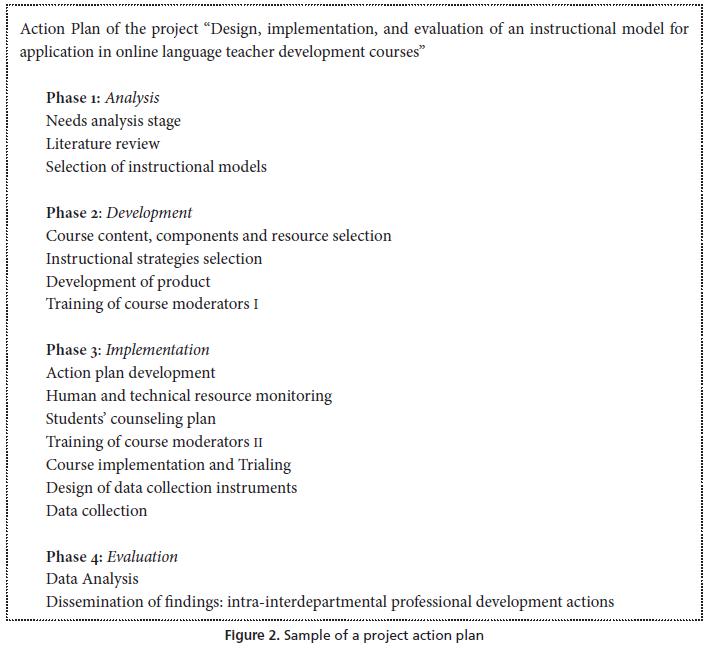
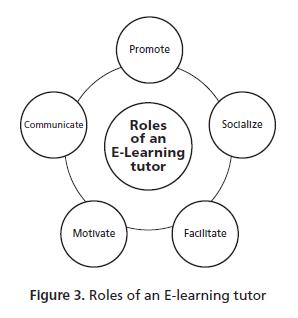
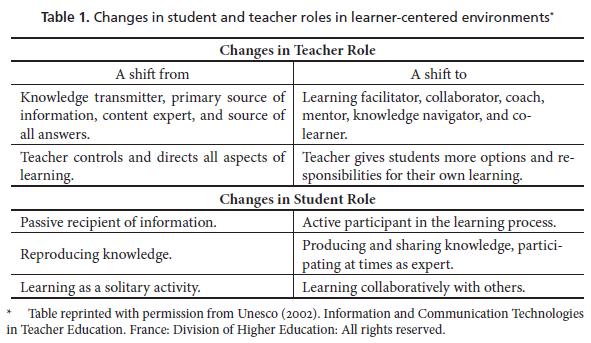

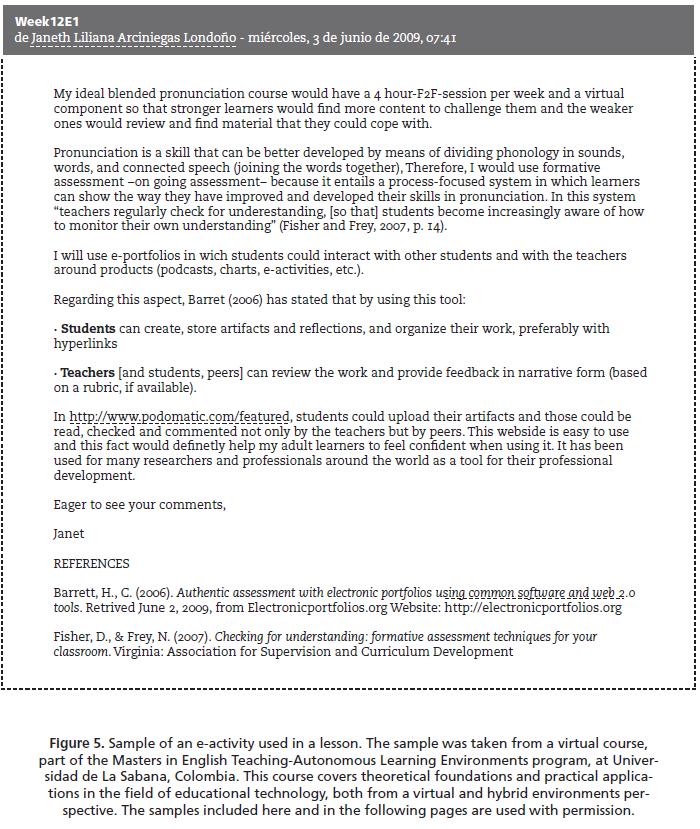
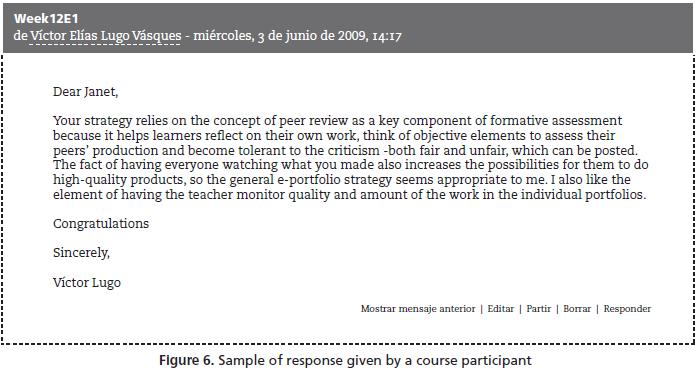 1
1 